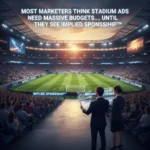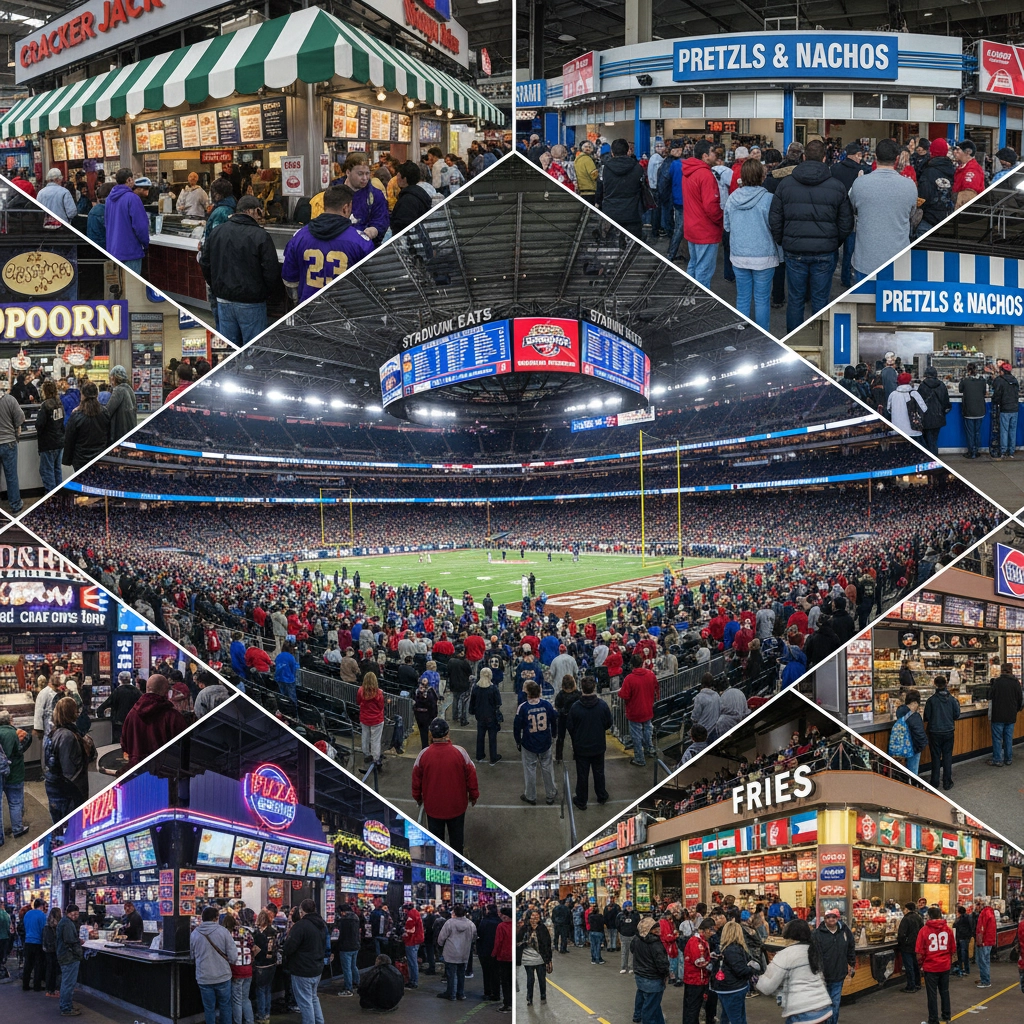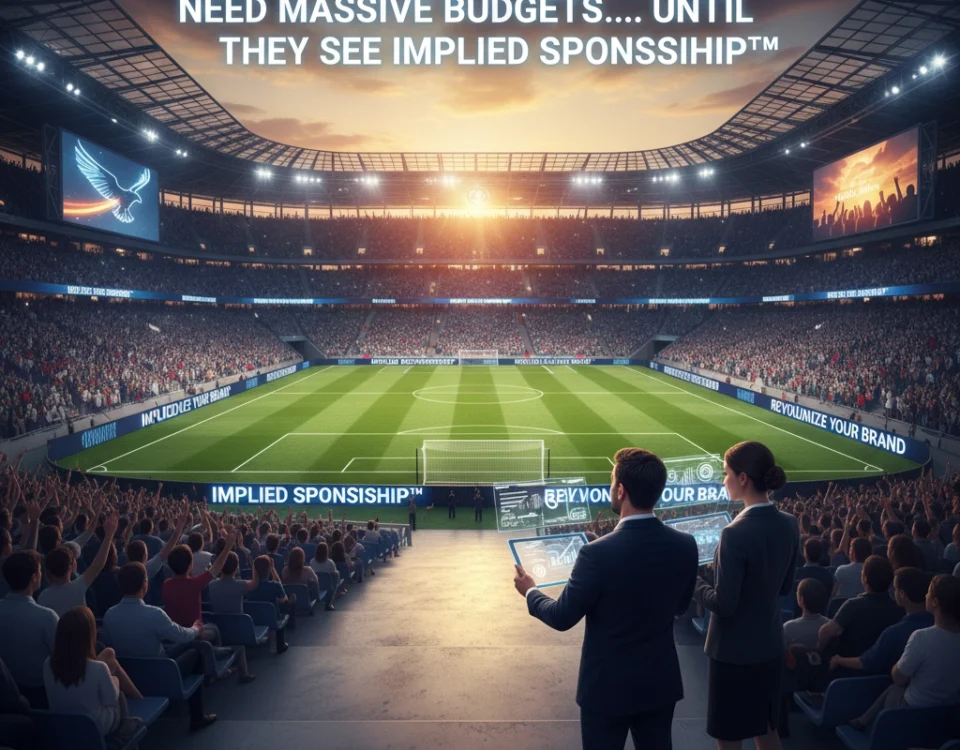
Bet you can't unlock big-league exposure without blowing your ad budget: unless you know this trick.
November 13, 2025
Most marketers think stadium ads need massive budgets… until they see Implied Sponsorship™.
November 13, 2025They don't want you to know the fast-track secret to getting your product into 850+ stadiums.

1EM9XXf2Vyi
The Sports Industry's Best-Kept Distribution Secret
The established players in sports marketing don't want you to discover what we're about to reveal. They've built their empires on keeping smaller brands locked out of stadium distribution networks. But here's the truth they're desperately trying to hide: there's a fast-track method to get your product into 850+ stadiums without the traditional gatekeepers.
Major corporations spend millions on exclusive partnerships, creating artificial barriers that keep innovative brands on the sidelines. They want you to believe stadium distribution is impossible without deep pockets and decade-long relationships. That's exactly what makes this revelation so powerful.
Why Stadium Distribution Matters More Than Ever

Stadium venues represent the ultimate captive audience. Fans spend an average of 3.5 hours in these facilities, with 78% making at least one purchase during their visit. That's 850+ locations where your target customers are actively looking to spend money, feeling emotionally connected to their teams, and open to discovering new products.
The revenue potential is staggering:
- Average stadium generates $2.8 million annually in concession sales
- Premium venues can exceed $15 million per season
- Fans pay 300% markup without hesitation due to convenience and experience factors
But here's what the big brands don't want you to know: you don't need their traditional distribution channels to tap into this goldmine.
The Traditional Gatekeepers Want You to Fail

The established sports marketing industry has created an intentionally complex system designed to exclude newcomers. They'll tell you that stadium distribution requires:
- Exclusive manufacturer partnerships worth millions
- Years-long relationship building with venue operators
- Massive inventory commitments that smaller brands can't handle
- Complex logistics networks that only enterprise companies can manage
This is deliberate misinformation designed to protect their market share.
The reality? Smart brands are bypassing these gatekeepers entirely using strategies the industry doesn't want publicized.
The Fast-Track Secret They're Hiding
Implied Sponsorship through Strategic Venue Partnerships.
While major brands fight over official sponsorship deals costing $750,000 to $2 million annually, innovative companies are securing stadium presence for a fraction of that investment. Here's how the fast-track system actually works:
Phase 1: Direct Venue Engagement
Skip the corporate middlemen entirely. Stadium operators are business owners looking for profitable partnerships, not just big-name recognition. They want products that:
- Generate consistent revenue streams
- Enhance fan experience without major operational changes
- Require minimal training or infrastructure investment
- Offer attractive profit margins
Phase 2: Test Market Validation

Start with 5-10 strategically selected venues to prove your concept. Document everything:
- Sales velocity compared to competing products
- Customer satisfaction scores
- Operational efficiency metrics
- Profit margins for venue partners
This data becomes your weapon for rapid expansion to additional stadiums.
Phase 3: Leverage Network Effects
Once you've proven success in initial venues, stadium operators talk to each other. Positive results in major markets create demand from secondary venues. You're no longer selling your product – you're responding to requests from venues wanting to replicate successful partnerships.
Why This Strategy Works When Others Fail
The secret isn't just about bypassing gatekeepers. It's about understanding what stadium operators actually need versus what big corporations think they want.
Traditional Approach:
- Focus on brand recognition and marketing support
- Require extensive infrastructure changes
- Demand exclusive arrangements that limit venue flexibility
- Prioritize corporate objectives over venue profitability
Fast-Track Approach:
- Emphasize immediate revenue generation for venues
- Design products that integrate seamlessly into existing operations
- Offer flexible partnership terms that benefit venue operators
- Prioritize mutual profitability over corporate ego
The Numbers They Don't Want You to See

Companies using this fast-track approach are achieving remarkable results:
- Average time to 100+ stadium placements: 18 months
- Typical investment required: $60,000-$120,000 (versus $750,000+ traditional sponsorships)
- Revenue per venue partnership: $15,000-$45,000 annually
- Profit margins: 35-60% after venue revenue sharing
These numbers explain why established players want to keep this strategy hidden. It democratizes stadium distribution in ways that threaten their market dominance.
Implementation Without the Corporate Bureaucracy
Getting started requires strategic thinking, not massive budgets:
Month 1-2: Market Research and Venue Identification
- Identify 20 target venues across different market sizes
- Research venue operator priorities and current product gaps
- Develop partnership proposals focused on venue profitability
Month 3-4: Initial Pilot Programs
- Launch test programs with 3-5 venues
- Implement tracking systems for all key performance metrics
- Gather detailed feedback from venue operators and customers
Month 5-6: Optimization and Documentation
- Refine product offering based on real venue feedback
- Document operational procedures and training requirements
- Create standardized partnership agreements for rapid deployment
Month 7-12: Rapid Expansion
- Use pilot program data to approach additional venues
- Leverage network effects and venue operator referrals
- Scale operations to handle 50+ simultaneous partnerships
Breaking Through the Industry's Artificial Barriers

The sports industry wants you to believe that stadium distribution is their exclusive domain. They've created artificial complexity to maintain their advantage. But venue operators are independent business owners who care more about profitability than corporate politics.
Your competitive advantage comes from understanding this fundamental truth: stadium operators want profitable partnerships, not expensive corporate bureaucracy.
When you approach venues with solutions that generate immediate revenue while enhancing fan experience, you're speaking their language. The traditional gatekeepers become irrelevant.
The Implied Sponsorship Advantage
This is where the strategy becomes truly powerful. While competitors spend millions on official sponsorship deals, your products gain stadium presence through strategic partnerships that create implied sponsorship value at a fraction of the cost.
Fans don't distinguish between official sponsors and strategic partners. They see your products in the venue and associate them with the team and experience. You achieve sponsorship-level brand exposure without sponsorship-level investment.
Your Next Steps to 850+ Stadium Distribution
The fast-track secret is now in your hands. The question isn't whether this strategy works – it's whether you'll take action while your competitors remain locked into traditional approaches.
Stadium distribution success doesn't require corporate connections or massive budgets. It requires understanding what venue operators actually need and delivering solutions that generate mutual profitability.
The 850+ stadiums aren't controlled by the major brands. They're run by business owners looking for profitable partnerships with companies that understand their priorities.
Ready to bypass the gatekeepers and access stadium distribution networks directly? The fast-track approach is available to companies willing to think strategically rather than follow traditional industry approaches.
Have any questions? Call us.

